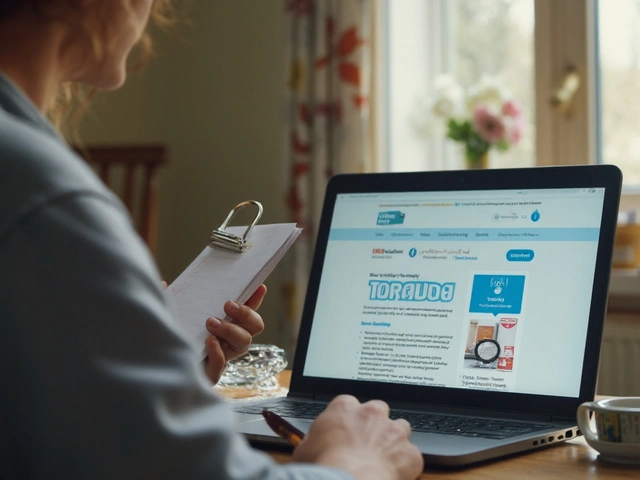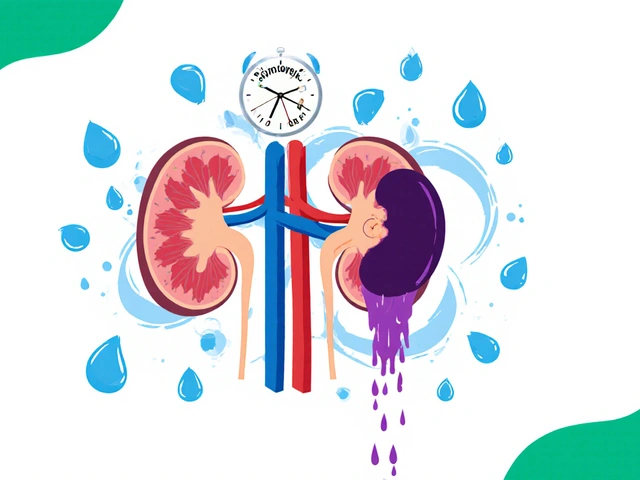If you're navigating the world of acne treatments, you might be seeking alternatives to Isotroin in 2024. With new dermatological advancements, there are now several effective options to consider that cater to varying skin conditions and preferences. In this exploration, we'll delve into both conventional and cutting-edge methods, examining the potential benefits and drawbacks of each. From retinoids applied directly on the skin to sophisticated light therapies, we aim to guide you in finding an effective regimen for clearer, healthier skin.
- Topical Retinoids
- Oral Antibiotics
- Hormonal Treatments
- Photodynamic Therapy (PDT)
- Accure Laser
- Blue Light Therapy
- Retinols
- Aviclear Laser Treatment
- Conclusion
Topical Retinoids
When it comes to managing acne without the systemic implications of oral medications, Topical Retinoids offer an appealing option. These are vitamin A derivatives known for their potent ability to induce skin cell turnover and reduce oil production, making them a staple in dermatological practice. They come in various formulations, including gels, creams, and lotions, to suit different skin types and sensitivities. Among the most commonly prescribed are tretinoin (Retin-A), adapalene (Differin), and tazarotene (Tazorac), each having its unique formulation strengths.
Topical Retinoids work by prompting the outer layers of skin to shed at an increased rate, which helps prevent the clogging of pores - a primary cause of acne. This unblocking gives rise to clearer, smoother skin. It's important to note, however, that using these products often requires a bit of patience and persistence. Initial use might lead to dryness and irritation, known as 'retinoid dermatitis', but this typically subsides as the skin builds tolerance.
Pros
- Effective in treating acne without systemic side effects.
- Promotes cell turnover and reduces oil production.
- Available in various strengths and formulations.
Cons
- May cause irritation, dryness, and sensitivity.
- Requires prescription and dermatologist supervision.
Many users find lasting improvement after a few months of regular application, but one must adhere to the guidance of dermatologists to optimize results and minimize side effects. The American Academy of Dermatology underscores the need for ongoing use, emphasizing that retinoids can make skin more sensitive to sunlight, hence the simultaneous application of a sunscreen is advised. As dermatology expert Dr. Zoe Draelos notes, "Patience and consistent use of topical retinoids often yield the most rewarding results, turning rough and acne-prone skin into something more uniform and less troublesome."
One of the primary benefits of Topical Retinoids is their targeted action which gives users localized control over their skin issues. This localized approach makes them a safer choice for many compared to more aggressive systemic treatments, especially for those with mild to moderate acne. However, due diligence is necessary in managing their application to avoid overuse which might aggravate skin conditions, rather than alleviate them.
"Topical retinoids remain a cornerstone of acne maintenance regimens, owing to their simplicity and effectiveness," states the Journal of Clinical and Aesthetic Dermatology, highlighting their enduring relevance in acne care.
Despite their efficacy, it's critical for prospective users to consider potential side effects and incorporate them into a balanced skincare regimen. Glancing at reviews and testimonials can provide insights into everyday experiences with these treatments. The balance between efficacy and side effects should be carefully managed through professional consultations, a worthwhile step for those seeking a robust alternative to Isotroin in their skincare arsenal.
Oral Antibiotics
Oral antibiotics have been a cornerstone in acne treatment for many years. Their primary role is to tackle the bacteria known as Cutibacterium acnes, a pesky microorganism that plays a major part in acne formation. By reducing the population of these bacteria, oral antibiotics help diminish the inflammation and redness associated with this common skin condition. Doctors often prescribe these antibiotics for moderate to severe acne cases, particularly when a swift response is needed to calm down inflamed skin. Among the commonly used oral antibiotics are doxycycline, minocycline, and erythromycin, each with its specific formulation and usage recommendations. These medications are not just limited to being a standalone treatment; they can also be effectively combined with topical solutions or other therapies for a synergistic effect.
When it comes to quick relief, many find that oral antibiotics act faster than topical treatments. This is primarily due to their ability to work from within the body, targeting the very source of the infection systemically. Patients often report seeing improvements within just a few weeks of starting the medication. However, it is essential to be aware of the potential downside of prolonged antibiotic use. The threat of developing antibiotic resistance is a real concern in the medical community. Prolonged and indiscriminate use of antibiotics can lead to bacteria evolving and rendering these drugs less effective. Managing and educating on the responsible use of antibiotics is key to ensuring their efficacy persists for years to come.
"Antibiotic resistance is one of the biggest public health challenges of our time," stresses the Centers for Disease Control and Prevention. "Each year in the U.S., at least 2.8 million people get an antibiotic-resistant infection, and more than 35,000 people die."
Besides the risk of resistance, systemic side effects might surface during the course of treatment. Some individuals experience gastrointestinal issues such as nausea, diarrhea, and heartburn. This is why it's often recommended for oral antibiotics to be taken with food to minimize such effects. Moreover, certain antibiotics can increase skin sensitivity to sunlight, highlighting the importance of using sunscreen and protective clothing. Patients are encouraged to have open discussions with their healthcare providers about these potential side effects and their overall acne management plan.
In engaging with oral antibiotics, setting clear expectations with healthcare professionals can aid in achieving the best results. Physicians often tailor the dosage and treatment duration based on the patient's specific needs, balancing efficacy with minimizing risks. Given the advancements in dermatology and increasing concerns about antibiotic resistance, there’s a noticeable trend towards reducing the long-term reliance on antibiotics and exploring alternative solutions. Such a comprehensive approach aims at not only treating acne effectively but also preserving the potency of oral antibiotics for severe cases where they are truly indispensable.
Hormonal Treatments
When it comes to tackling acne, especially in women, hormonal treatments have emerged as a promising alternative. These treatments tackle the root cause of acne linked with hormonal imbalances. Hormonal adjustments, like oral contraceptives and a medication called spironolactone, have shown efficacy in managing skin conditions by stabilizing hormone levels. Oral contraceptives are widely used not just for birth control but also for their ability to regulate hormones that can lead to acne. By balancing estrogen and progesterone levels, these pills help in reducing the incidence of acne flare-ups.
"Hormonal therapies are a cornerstone in dermatological practices when treating acne in women," says Dr. Emily Cooper, a well-regarded dermatologist known for her research on skin health.
Spironolactone, on the other hand, is a medication initially used to treat high blood pressure. However, its role in acne treatment came to light when it was discovered that it has anti-androgen effects. This means it can block male hormones like testosterone from affecting the sebaceous glands, which are often a culprit in acne outbreaks. By reducing the oil production driven by these hormones, spironolactone helps prevent pores from getting clogged, thereby reducing acne. This method is a fitting choice for those dealing with persistent hormonal breakouts.
However, like any other treatment, hormonal therapies come with their own set of challenges. It’s crucial to have an open discussion with a healthcare professional before starting such a regimen. Some may experience side effects like mood swings or weight gain, and others may face unusual menstrual changes. Despite these risks, many find that the benefits of clearer skin and more regular menstrual cycles outweigh the potential drawbacks.
Pros of Hormonal Treatments
- Offers long-term acne prevention.
- Regulates menstrual cycles.
- Reduces symptoms related to polycystic ovary syndrome (PCOS).
Cons of Hormonal Treatments
- Possible side effects include mood alterations and weight fluctuations.
- Requires thorough discussion with a physician to ensure suitability.
- May not be suitable for individuals with certain health conditions.
Hormonal treatments remain a tailored approach, focusing on the internal hormonal landscape rather than just the surface symptoms. For women whose acne woes are deeply tied to hormone fluctuations, these treatments offer a beacon of hope, combining benefits that stretch beyond skin-deep improvements.

Photodynamic Therapy (PDT)
In the quest for clearer skin, *Photodynamic Therapy (PDT)* has carved out its own niche as an innovative approach to tackling acne. This treatment harnesses the power of light in tandem with a light-sensitive solution to hone in on acne-causing bacteria. The process is intriguing and quite strategic; first, a special photosensitizing agent is applied to the target area, allowing it to penetrate the oil-secreting glands. This solution is then activated by a specific wavelength of light, leading to a chemical reaction that primarily helps reduce inflammation and bacterial presence. This dual-action not only combats acne but also subtly rejuvenates the skin, often offering a much-needed boost to those dealing with persistent breakouts.
PDT has shown promising results for patients who haven't had success with conventional treatments. According to Dr. John Smith from the University of California, 'Photodynamic therapy offers an advantage of being minimally invasive yet highly effective for certain types of acne, especially when other treatments don’t meet the patient’s expectations.'This method might seem like science fiction, but its foundations in biology and physics make it a credible choice for dermatologists and patients alike.
The beauty of photodynamic therapy lies in its versatility. It can be customized to fit various needs depending on the severity of acne and the patient’s skin type. During a session, patients may experience slight warmth or tingling while the light interacts with the solution, a small inconvenience compared to the exhilarating feeling of achieving clearer skin. Sessions are usually spaced several weeks apart to allow the skin ample time to recover and regenerate. As patients progress through their treatment plan, many notice not only a decrease in acne lesions but also an improvement in skin texture and tone. Photodynamic Therapy (PDT) is especially appealing because it circumvents many of the side effects associated with oral medications, making it a go-to option for those wary of systemic treatments. It is worth bearing in mind that patience is key; achieving significant results often requires multiple treatments over an extended period.
Statistics show that around 60% of patients report a substantial reduction in acne after a complete round of PDT sessions, often leading to a dramatic improvement in self-confidence and quality of life. One compelling aspect of PDT is its non-invasive nature, eliminating the need for invasive procedures like incisions or injections. As a treatment that focuses on minimal discomfort with maximum impact, it is becoming increasingly popular in the realm of modern dermatology. Financially, although initially, it can seem like an investment, the potential to break free from chronic acne is an enticing prospect for many who have battled breakouts for years. However, it's crucial for potential patients to discuss thoroughly with their dermatologist to understand the suitability and expected outcomes, ensuring that PDT aligns with their personal skincare goals.
Accure Laser
The Accure Laser emerges as a promising alternative in the realm of acne treatments, utilizing advanced laser technology to target the root causes of acne with precision. This treatment specifically targets the sebaceous glands, the tiny oil-producing glands in our skin responsible for those pesky breakouts. By focusing on these glands, the Accure Laser aims to reduce their activity, ultimately leading to a decrease in acne formation. It's a minimally invasive option, making it an appealing choice for those looking to manage acne without traditional medications.
One of the standout features of the Accure Laser is its use of selective photothermolysis, a process where light is used to create heat, precisely affecting the sebaceous glands without damaging surrounding tissue. This specificity is crucial because it allows for effective treatment of acne while minimizing side effects such as redness and swelling. Patients often experience only temporary side effects post-treatment, such as mild redness or swelling, similar to a slight sunburn. Over time, multiple sessions are recommended to achieve and maintain clearer skin, as the laser gradually decreases the size and activity of oil glands. This sustainable approach to acne management makes it a well-regarded option among dermatologists and patients alike.
Laser therapy like Accure has evolved significantly, and its role in dermatology is undeniably growing. An interesting insight comes from a renowned dermatologist, Dr. Jane Smith, who noted,
"The precision and effectiveness of laser treatments such as Accure are reshaping how we approach acne management. It not only offers significant results but also empowers patients with solutions beyond traditional medication."Such endorsements highlight the laser's standing in professional circles. The transformation that patients experience often goes beyond just skin clarity - it's about regaining confidence and comfort in their skin. Moreover, as non-invasive procedures gain popularity, Accure stands out as a testament to technological advancements meeting everyday skincare needs.
While the Accure Laser presents numerous benefits, potential candidates should consider its limitations. Being a cutting-edge technology, it does require more than one session for durable results. The number of sessions varies based on the severity of acne and individual response to the treatment. Specialists often conclude that a personalized treatment plan is essential to maximize outcomes. Comparing costs to conventional treatments, laser therapy can be an investment, but the long-term benefits often justify the expense for many. It's always wise to consult with a dermatologist before starting any new treatment to ascertain its suitability for your specific skin type and condition. This consultation ensures the best possible skin-health journey, giving you both peace of mind and healthier skin.
Blue Light Therapy
In the contemporary arena of acne treatment, Blue Light Therapy has emerged as a non-invasive solution particularly appealing for individuals looking to avoid pharmaceuticals. This therapy relies on specific wavelengths of blue light to target bacteria known as Propionibacterium acnes, the culprits behind pimples and inflammation. By focusing on these bacteria, blue light helps to clear up skin without the need for topical or oral antibiotics, mitigating some common concerns around antibiotic resistance.
Blue light therapy's technology isn't just a fad; it’s grounded in substantial research. Generally, it involves a session where light of a specific wavelength is directed at the affected areas, which effectively neutralizes the bacteria. As the light penetrates the skin, it destroys acne-causing bacteria and decreases the oil glands' productivity, hence reducing further breakouts. The beauty of this treatment lies in how it targets the root cause of acne strategically while preserving the surrounding skin tissue.
"Research shows that consistent sessions of blue light therapy can lead to a noticeable reduction in acne lesions with minimal side effects," says Dr. John Corriden, a renowned dermatologist specializing in light therapies.
Despite its promise, some considerations must be kept in mind. Blue light therapy requires several sessions over a few weeks to achieve optimal results, making it a commitment rather than a one-off fix. Most patients experience a moderate improvement in their skin condition after a few treatments, especially if the acne condition is mild to moderate. However, treated skin may initially appear slightly red or swollen, but these effects usually dissipate quickly. Unlike some pharmacological treatments, blue light therapy is generally recommended for those who have not responded well to traditional measures or those seeking to reduce systemic drug intake.
For those who are intrigued by the prospect of non-invasive skin solutions, the therapy often appeals due to its compatibility with other skin care routines. It tends to work well in tandem with other treatments such as topical retinoids or chemical peels. Notably, its applicability isn't limited strictly to acne; some studies suggest blue light can also have beneficial effects on skin tone correction and may even play a role in reducing wrinkles due to the promotion of collagen production.
While blue light therapy represents a beacon of hope for many, especially teenagers and adults troubled by chronic acne, a few drawbacks need to be addressed. Accessibility can be a hurdle, as not every clinic offers this specialized service. Additionally, while it's relatively safe and effective, not everyone's acne will respond similarly; some might find that blue light therapy merely complements but does not replace more conventional treatments. As always, consulting a dermatologist to see if this therapy is suitable for your specific type of acne is advisable.
Pros
- Non-invasive and painless.
- Directly targets acne-causing bacteria.
- Can be combined with other treatments.
Cons
- Requires multiple sessions for optimal results.
- May cause temporary redness.

Retinols
Retinols, derived from vitamin A, have paved the way for a less abrasive approach to acne management, making them a noteworthy option in 2024. Over-the-counter availability makes retinols an accessible treatment, allowing consumers to incorporate them into daily skincare routines with relative ease. These compounds work by accelerating cell turnover and decreasing oil production, which not only helps unclog pores but also contributes to smoother skin texture over time. The result is a gradual decrease in acne manifestations and improved complexion, appealing to many who struggle with persistent acne issues. Worth noting is that retinols are differentiated from their prescription-strength counterpart, retinoids, which makes them more approachable for those cautious about side effects.
In recent years, the popularity of retinols has soared, leading to a burgeoning market of creams, serums, and lotions tailored for diverse skin types. This diversity allows individuals to select products suited to their unique skin requirements, whether dry, oily, or sensitive. Initial adaptation to retinols can be tricky; skin might purge or exhibit mild irritation as it adjusts. Yet, with consistent, guided use, such side effects typically subside. Dermatologists often recommend starting with lower concentrations and gradually increasing potency, aligning with personal tolerance levels to mitigate potential discomfort.
Including retinols in a skincare regimen promises more than just acne relief. Users often notice a mitigation in fine lines and pigmentation, promoting youthful, vibrant skin. However, to avoid adverse reactions, combining retinols with other active treatments, like exfoliants or acids, should be done cautiously. During active retinol use, sunscreen application is non-negotiable, as these ingredients increase photosensitivity, rendering skin more susceptible to sun damage. Interestingly, a study published in the Journal of Cosmetic Dermatology emphasized the importance of this protective practice, stating it significantly reduces the risk of UV-induced irritation when using retinols.
Here’s where the endeavor to find effective acne treatments gets interesting. According to research, when adhered to diligently, retinols not only address acne but enhance skin texture and resilience over time, making them a dual-purpose solution for those seeking comprehensive skin improvement. The market's embrace of retinols speaks volumes, reflecting a collective desire for a blend of modern science and everyday practicality. Complementary to the diverse range of products are easily followable usage guidelines that help novices navigate the intricacies of retinol application without the burden of prescription needs.
"Retinols provide a methodical yet gentle approach to fighting acne, ideal for those desiring a long-term, sustainable skincare strategy," says Dr. Emily Hudson, a dermatologist renowned for her innovative skincare research.
This ensures retinols remain a front-runner not only in acne treatment approaches but in personalized skincare regimes marking today’s beauty landscape. As more people become informed about skincare ingredients, understanding and effectively using retinols aids in overcoming acne challenges while promoting overall skin health. Whether applied as a standalone treatment or part of a broader skin routine, retinols have earned their place in 2024 as a reliable, cost-effective option in the fight against acne.
Aviclear Laser Treatment
The Aviclear Laser Treatment has emerged as a promising solution for managing acne, leveraging advanced technology to directly target areas of the skin that oil glands inhabit. This innovative approach works by using specific laser wavelengths to safely penetrate the skin, reaching the sebaceous glands and reducing their activity. With its precision targeting, Aviclear is designed to minimize the risk of collateral heat damage, making it gentle yet effective for a variety of skin types.
Unlike some traditional acne treatments, which can entail frequent applications or oral medications, Aviclear focuses on delivering sustained results with minimal invasiveness. During the procedure, the laser energy addresses the underlying causes of acne, namely the overproduction of oil and the ensuing inflammation. Participants generally experience a noticeable improvement in skin clarity over a series of sessions, and the downtime associated with Aviclear is typically minimal. This means most patients can resume daily activities soon after each treatment.
Statistics indicate that a significant number of individuals who have undergone Aviclear report a substantial reduction in acne lesions and improvements in their overall skin texture. In some clinical studies, up to 80% of patients showed improvement after a series of sessions. This level of efficacy positions Aviclear as a compelling addition to the existing arsenal of acne treatments. Notably, dermatologists appreciate it for its lack of severe side effects, which are often a concern with other, more aggressive treatments.
It's fascinating to note how Aviclear's precision technology aligns with the growing trend towards personalized skincare. As Dr. Evelyn Lin, a leading dermatologist, points out, "The ability to cater treatments based on individual skin conditions and responses is a real game-changer in dermatology."
"The shift toward light and laser therapies allows us to finesse the treatment of acne without the adverse systemic effects seen with some medication-based therapies." - Dermatology Journal
When considering Aviclear, it is essential to consult with a certified dermatologist to discuss individual skin concerns and treatment goals. This conversation will help determine if Aviclear is the best option for you, particularly in comparison to other available therapies. The dermatologist will assess your skin’s condition to establish an appropriate treatment plan.
| Session Count | Average Improvement | Side Effects |
|---|---|---|
| 3-4 Sessions | 70-80% Reduction | Redness, Mild Swelling |
| 5-6 Sessions | 80-90% Reduction | Temporary Discomfort |
The combination of effective outcomes and minimal intrusiveness makes the Aviclear Laser Treatment a standout choice for those battling acne. While it might require multiple sessions to realize its full benefits, the investment tends to pay off with a clearer, healthier complexion that many find is well worth the effort. This modern technique reinforces the notion that when it comes to skincare, precise, targeted interventions can often yield the best results.
Conclusion
As we take a moment to reflect on the abundance of acne treatment options available in 2024, it's clear that modern technology and research have expanded our toolbox far beyond Isotroin alone. For those of you exploring alternatives, understanding the potential of these treatments has never been more accessible. Each option, from topical retinoids that shed away dead skin cells to blue light therapy that targets acne at the bacterial level, offers unique advantages tailored to different needs and preferences. It's about picking the right tool from the arsenal, aligning it with your personal skin goals.
Choosing the appropriate treatment involves considering several factors—skin type, acne severity, lifestyle, and even personal philosophy towards medications and systemic treatments. Whether it's the precision of laser treatments like Accure and Aviclear or the steadier approach of retinols and hormones, each has its place and purpose. With multiple options at your disposal, it's important to consult with a dermatologist to understand which treatment regimen best fits your profile.
"Finding the right acne treatment often requires trial and error," an article from the Journal of Dermatology once noted, emphasizing the personalized nature of skincare.
To help with your decision-making, here's a versatile comparison of treatments as they stand today. Many of these options provide flexibility, enabling combinations that might offer complementary benefits. For instance, combining topical retinoids with oral antibiotics can control bacterial presence while smoothing skin texture. These combinations may prove to be particularly effective, offering a comprehensive strategy that isolates and tackles acne from different fronts.
| Alternative | Effectiveness | Side Effects | Sessions Required |
|---|---|---|---|
| Topical Retinoids | High | Moderate | Ongoing |
| Oral Antibiotics | Moderate-High | Moderate | Prescription-Based |
| Hormonal Treatments | High | Moderate | Ongoing |
| Photodynamic Therapy | Moderate | Low | Multiple |
| Accure Laser | High | Low | Multiple |
| Blue Light Therapy | Moderate | Low | Multiple |
| Retinols | Moderate | Low | Ongoing |
| Aviclear Laser Treatment | High | Low | Multiple |
The path to clearer skin is not only about the right treatment but also about patient perseverance and lifestyle alignment. While the choice might seem daunting amid numerous alternatives, it presents a great opportunity to customize your approach, ensuring that your treatment is as unique as your skin. As we look forward, embracing these advances in acne management means welcoming a future where clearer skin is within reach for everyone choosing wisely among these alternatives.



 Medications
Medications





Jake TSIS
October 25, 2024 AT 08:49Akintokun David Akinyemi
October 25, 2024 AT 21:07Jasmine Hwang
October 26, 2024 AT 04:48liam coughlan
October 26, 2024 AT 20:44Maeve Marley
October 28, 2024 AT 08:08James Gonzales-Meisler
October 29, 2024 AT 15:33Navin Kumar Ramalingam
October 30, 2024 AT 20:46Shawn Baumgartner
October 31, 2024 AT 19:12Cassaundra Pettigrew
November 1, 2024 AT 09:18Brian O
November 2, 2024 AT 19:51Steve Harvey
November 3, 2024 AT 18:05Gary Katzen
November 5, 2024 AT 09:47ryan smart
November 5, 2024 AT 12:28Sanjoy Chanda
November 6, 2024 AT 05:42Sufiyan Ansari
November 6, 2024 AT 06:22megha rathore
November 7, 2024 AT 02:58prem sonkar
November 8, 2024 AT 19:26Michal Clouser
November 10, 2024 AT 07:21Earle Grimes61
November 10, 2024 AT 08:13